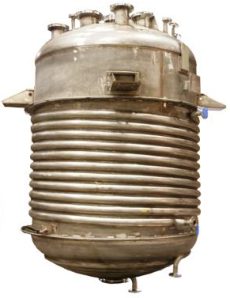The Canadian Standards Association (CSA) sets standards for manufacturing quality for various components, including boilers, pressure piping and pressure vessels. CRNs are required for these assemblies to comply with standards.
What Is CRN?
CRN stands for Canadian Registration Number and is the number that certifies pressure vessels in Canada. Each unique design has its own CRN number. Similar to the ASME requirements in the USA and the various certifications in Europe, Canada defines requirements for pressure vessels under their CSA B51-03 standard.
A CRN number has a standard format of one letter, three to five digits, a decimal point, and at least one more digit, like this:
B1234.5123
The digit after the decimal point indicates which province the pressure vessel was first registered in. The numbers after this one indicate the other provinces that accept the design. In the example above, the “5” means the pressure vessel was registered in Ontario, and the design is also accepted in British Columbia (1), Alberta (2) and Saskatchewan (3).
Once a pressure vessel design is registered with a CRN number, you can produce as many identical vessels as you need. CRN product manufacturing is not restricted to Canada — assemblies can be built worldwide.
CRNs get complicated because each of the 13 provinces in Canada issues their own. As a result, each province has its own requirements. If you need your vessel certified across the whole of Canada, it means you’ll have to meet requirements in seven organizations and have your design reviewed seven times!
Why Is CRN Required?
CSA Standard B51-03 established the safety, quality, performance and interchangeability standards for pressure vessels. Every pressure vessel needs a CRN for:
- Approved design: Before registering pressure equipment, its design must be reviewed to ensure it complies with safety standards. CRN numbers indicate that the pressure vessel conforms to the approved equipment design associated with the code.
- Tracking: CRN numbers make the vessel trackable across Canada, regardless of the province.
- Use in each province: Pressure equipment must have CRN registration for each province where the assembly will be used. If the design fails inspection in a jurisdiction, that design cannot be used in that province.
ASME vs. CRN
ASME and CRN are both quality standards for pressure equipment. Both have codes for pressure piping — CSA B51-03 references several ASME standards and defers to their default requirements in many cases.
These certifications have these distinct differences:
- Jurisdictional compliance: While all Canadian provinces and territories use the CRN system, ASME is an international standard.
- Legal requirements: All pressure equipment used in Canadian provinces and territories must have a CRN, even if it is certified with ASME.
- Local standards: Though ASME codes are the foundation for design and production methods for CSA standards, the requirements for Canada have some specific rules added.
Browse CRN Vessels at BEPeterson
BEPeterson is your trusted partner for navigating the complicated process of CRN registration. Since 1935, we’ve developed a thorough understanding of what’s needed anywhere you need a pressure vessel in Canada. We can:
- Design and manufacture CRN pressure vessels: Our team can design and manufacture pressure vessels for you with the proper nameplates across all of Canada and for each province.
- Meet ASME and CRN requirements: We can also assume “turnkey” responsibility for them. That means you’re assured that your pressure vessels meet all ASME and CRN requirements for whichever province or provinces the vessels will be used.
- Provide CRNs and national registration: We can provide single-province CRNs or multiple ones. We can even provide national registration across all of Canada for your use or OEM distribution.
Learn more about our custom CRN pressure vessel solutions for your industry — call 508-501-0660 or email us at sales@bepeterson.com today.

